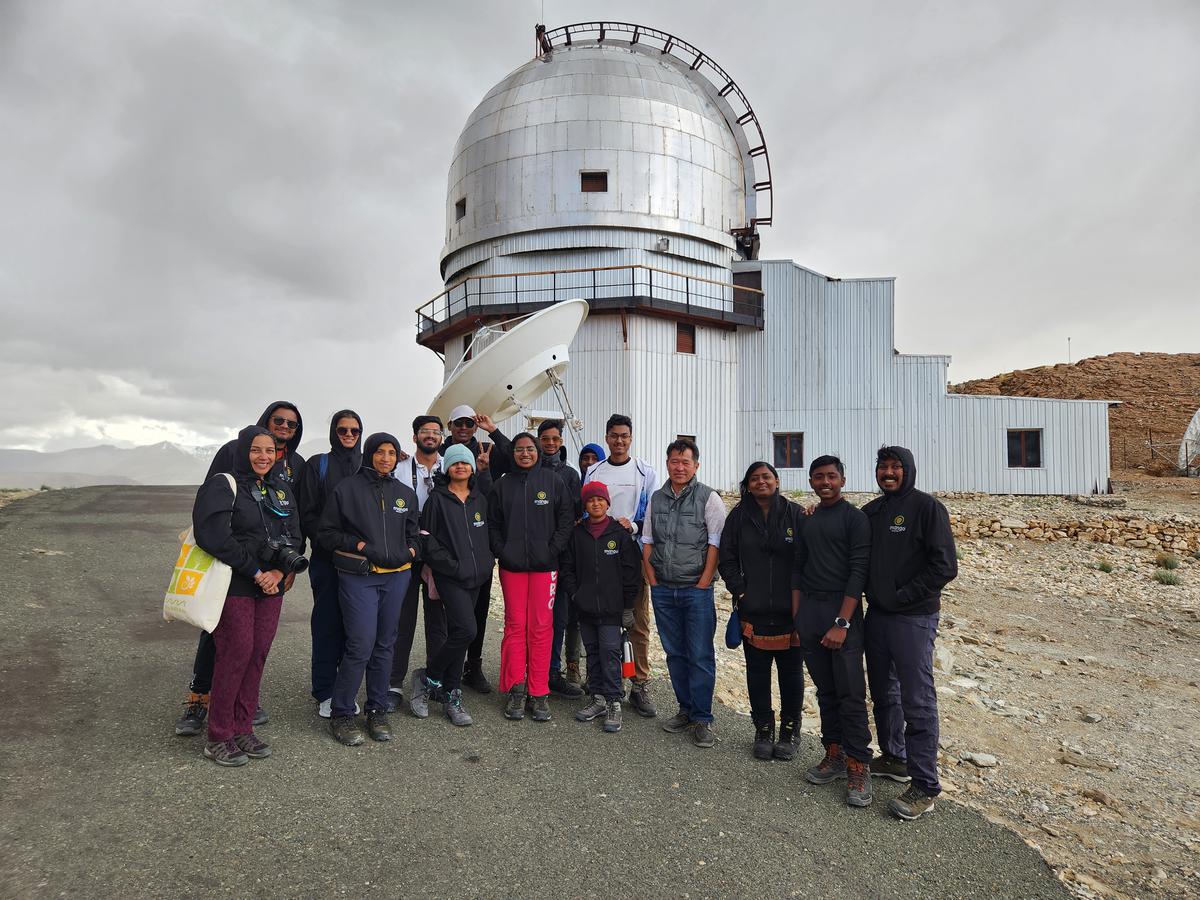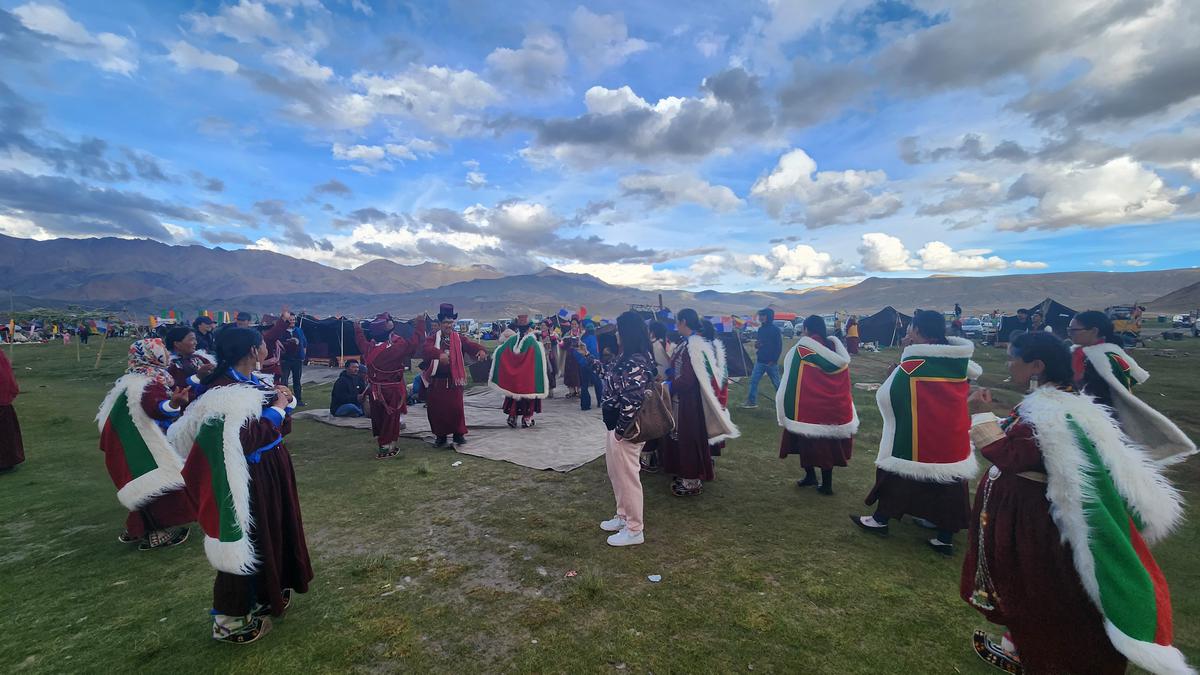[ad_1]
The Milky Way at night sky in Hanle
| Photo Credit: Akshay Satish
A stunning view of the Milky Way in a 180 degree arc extending from the South to the North at the night sky in Hanle, Ladakh, India’s first dark sky reserve, is an unforgettable memory for a bunch of young students from Coimbatore. “Every inch of the dark sky was filled with stars, star clusters and constellations. It was magical,” recalls Akshay Sathish (18). A team of 11 children led by Obuli Chandran, founder of Mango Education and astronomy educator Mihir Athale are just back from their first expedition to Ladakh where they observed a spectacular view of the night sky at Hanle. “We teach astronomy to students who have a passion for it. Along with theory, we have done several star gazing trips in the South to places like Mudumalai, Hasanur and Udhagamandalam where the skies are clear and there is very less light pollution. This is our first trip with children to the Himalayas,” says Obuli.

The team at Hanle with Dorje Angchuk
| Photo Credit:
Swati Karkare
Much before it became a dark sky reserve, Hanle was picked by the Indian Institute of Astrophysics to set up an observatory owing to its dry and cold weather. The high-altitude Indian Astronomical Observatory (IAO) located there at 14,764 feet, is one of the highest observatories in the world. “The IAO is a field station of IIA, Bengaluru,” says Dorje Angchuk, chief engineer in-charge at IAO, Hanle. “Our agenda is scientific research for the professional astronomer. Lately, we have been venturing into outreach,” says Dorje adding that every year, students from schools in and around Leh visit the reserve as a part of field trips. Along with his team, he has spent time and effort in orienting the locals to the wonders of astronomy.
The reserve has augmented facilities for night-time astronomy. After sun down, astronomy enthusiasts bring out their cameras and tripods and what follows is star hopping all through the night. “I have been studying astronomy for six years and my fascination with the night sky has increased after the visit to Hanle,” says Rishi Chander (16). For R N Vishnuvardhan (10), the youngest in the team, it was a first-time experience where he could catch a glimpse of the Andromeda Galaxy without using a telescope.

Nomadic Festival
| Photo Credit:
Obuli Chandran
While there, the team also got to experience the nomadic lifestyle and traditions of the people of the region at the Nomadic Festival 2023 at Hanle village in Changthang district. “We could see some of the best of cultural performances, where cultural troupes from different villages in Changthang presented dance, songs and traditional sports. Nomadic communities in Ladakh lead a challenging but self-sufficient lifestyle, adapting to the harsh climatic conditions and high altitudes. They have a deep connection with nature and maintain a strong sense of community and cultural identity,” says Mihir.
The team also got an opportunity to visit the Druk Padma Karpo School in Ladakh that features in the Aamir Khan-starrer 3 Idiots. Besides the night sky, the team also recall breathtaking views of cool blue lakes, snow-capped mountains, and a rejuvenating dip at Chumathang hot spring that bubbles from the ground near the banks of the ice-cold Indus River.
Dorje says they want to use astronomy to promote interest in science among students. “Being a remote observatory, Hanle is a difficult place to visit as it involves lots of travel and students are subject to AMS due to high altitude. Any group coming from the plains needs to be acclimatised for a minimum of two days before they can visit the observatory. We want to build excitement in astronomy with visits to such facilities and also give them an insight on the kind of instrumentation used for the same during day time along with a presentation of the research work carried out there,” he says, adding, “The objective is to make the pristine dark skies, a coveted destination for students.”
The Hanle Dark Sky Reserve is accessible throughout the year. For details on planning a trip from Coimbatore, call 9952243541/ 9894167141.
#Coimbatore #team #visit #Hanle #Dark #SkyReserve #Ladakh
[ad_2]
Source link


